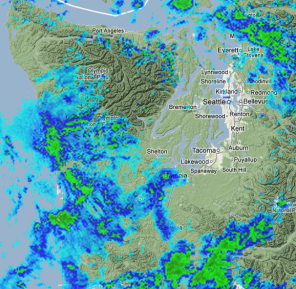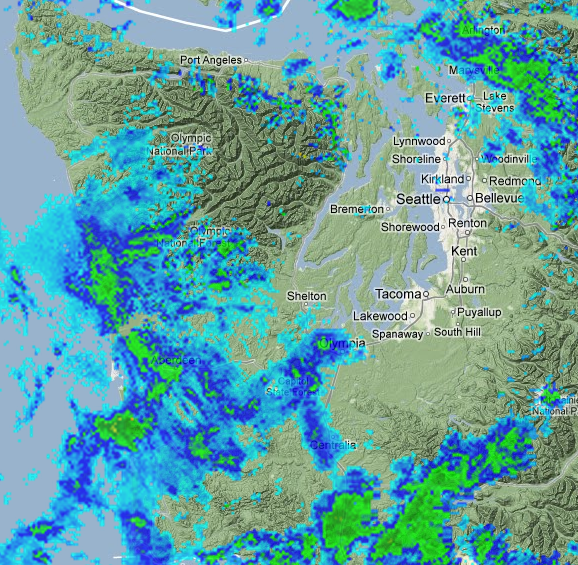
So much for our endless summer. While lighter showers are predicted to shuffle through Friday and Saturday, dropping up to half-an-inch of rain, more significant rainfall is expected Sunday and Monday.
As always, the exact amount of precipitation will be easier to lock in once the coastal radar gets a glimpse, but at this point the Seattle office of the National Weather Service expects higher elevations to soak up the worst:
MORE SIGNIFICANT PRECIPITATION WILL BEGIN LATE SATURDAY AFTERNOON OR SATURDAY EVENING AND CONTINUE THROUGH MONDAY. TOTAL PRECIPITATION FOR THAT PERIOD OF ABOUT 60 HOURS SHOULD BE ROUGHLY 3 TO 8 INCHES IN THE MOUNTAINS…WITH THE HEAVIEST AMOUNTS OVER THE OLYMPICS AND NORTH CASCADES–AND EVEN HEAVIER AMOUNTS OVER SOUTHWEST BRITISH COLUMBIA.
There’s an indication from models that the storm track may push northward 50 to 100 miles, so the supersoaker would be then aimed at our Canadian compatriots. That would please local football fans–there’s a UW Huskies game Saturday at 4 p.m. and a Seahawks game Sunday at 1 p.m.–but KOMO still has one to two inches penciled in for Seattle, so bring something rainproof.
Despite the heavy rains in the mountains, river flooding isn’t feared, in general, because there hasn’t been any rain to speak of for more than 80 days and everything is dry as a bone, ready to soak up whatever rain comes its way.
The question now is whether people are ready for rain at all. (KOMO’s Scott Sistek cautions, “…we’ll have to see if this winter follows a similar script. But one thing is for sure, if you believe in the law of averages, we’re seriously due for some wet.”) On Twitter, Washington’s Department of Transportation warned drivers: “As you meander out and enjoy the smell of the first rainfall, remember that roads will be slick because of it. #winteriscoming.” So far, the Seattle DOT Twitter stream is free of a cavalcade of collisions due to slippery conditions.
Seattle City Light says you may want to watch their outages map once the rain begins in earnest, though. In their latest release, officials spelled out what they’re worried about:
“What we are seeing is the possibility of outages due to a couple of issues,” says City Light Systems Control Director Pawel Krupa. “For overhead power lines, summer can bring a buildup of dust. When it rains after a long dry spell, that dust gets wet and can cause electricity leakage or short circuits. You might hear a buzzing sound when this starts to happen. That sound is the coating of the insulators burning off. When the coating is gone, a short circuit happens, creating an outage. A heavier rain will wash away the dirt and dust better.
“The same is true in our underground system. Underground power lines are insulated and designed to float in water that fills the concrete vaults, but over time the insulation becomes brittle. As temperatures begin to drop and with shorter daylight hours, demand for power increases. The increased flow of electricity puts more stress on the cable, increasing the risk of failure. If the insulation on an underground cable cracks, any water in the vault will cause a short,” adds Krupa.
The site Take Winter by Storm provides a number of tips for-the-prudent. If you are not prudent by nature, make a note of who is among your neighbors, so you know where to go when the lights go out.




